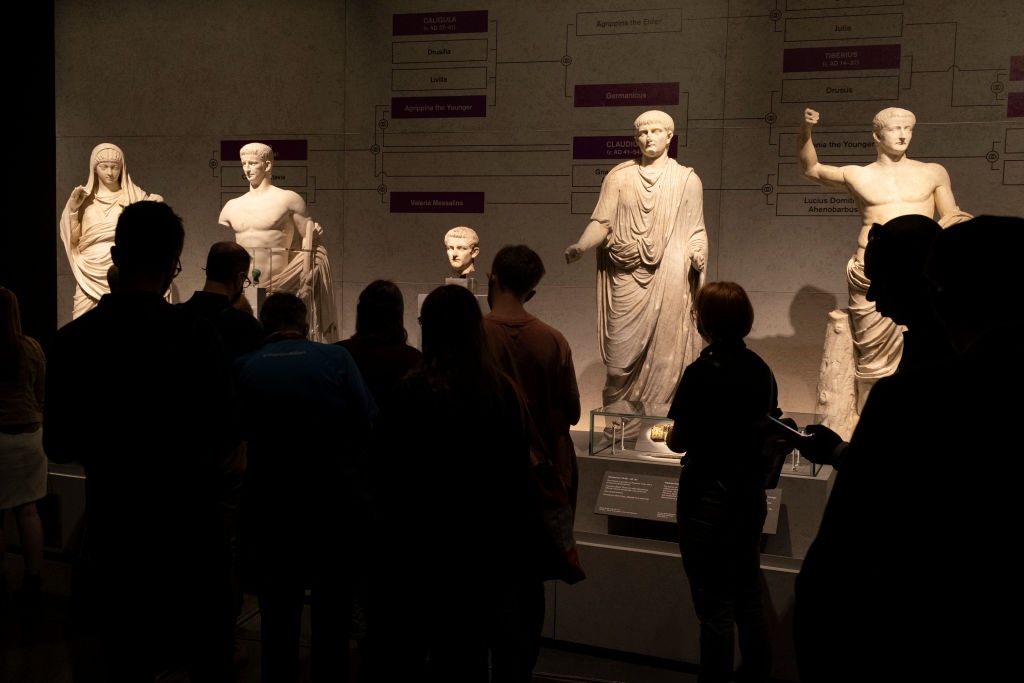When painters lose their sight
How the loss of vision can both help and hinder artists
By the mid-1920s, the painter Georgia O’Keeffe (1887-1986) was a figure of note in New York. Her large close-up paintings of flowers had caused a frisson and were seen both as metaphors for the female body and in their nose-to-the-petal simplicity examples of a new sort of Modernism — a form of non-abstract abstract art.
During her career, she made some 200 flower paintings and when commentators likened them to female genitalia she demurred: no, they were just flowers, she said. She went further to cut off invasive psycho-sexual speculation: “I hate flowers,” she claimed, “I paint them because they’re cheaper than models and they don’t move.”
Whatever the truth of this disingenuous statement, her admirers do love her flowers. In 2014, her Jimson Weed/White Flower No1 (1932) fetched $44.5 million, becoming the most expensive painting by a female artist ever sold. In the past year, four more of her flower pictures have sold for between $13 million and nearly $27 million: a cumulative total of $88.5 million makes for a very expensive posy indeed.
Her subject was no longer the visible world but images and ideas dredged from memory and imagination
O’Keeffe’s popularity is currently being confirmed by a major monographic show of her work at the Museum of Modern Art in New York. Many of her flower paintings are there, as are numerous scenes of the New Mexico landscape she started to paint from 1929 — often with a surreal twist.
What barely feature, however, are the many works she made from 1972 when she contracted macular degeneration and her eyesight began to fail. In that year she stopped painting in oils (at least without the help of assistants) but because she had some peripheral vision, she continued, after a break, to draw, and work in watercolour and clay. Her subject was no longer the visible world but images and ideas dredged from memory and imagination.
The experience of losing her sight was harrowing but O’Keeffe was never a sentimentalist. “When my eyes began to not see sharply as they had for 80 years and the world began to turn grey,” she wrote. “I was bothered and gradually stopped working. In time, I was surprised that this world could sometimes be beautiful in a new way, and began to think — how could I start again and begin to paint this new world.”
The painter never drew attention “to her desire to see”
She had had some intimations as early as 1964 when she likened her changing vision to a cloud entering her eyeballs. Carol Merrill, a poet and helpmeet to the painter at her house at Abiquiú, a simple building on a promontory above the road from Taos to Santa Fe, has described how O’Keeffe kept her worsening condition private. The painter never drew attention “to her desire to see” and Merrill was sworn to secrecy.
This omertà was partly born of a fear that the art market would not react well to an ailing painter who used assistants to bring works to fruition. Indeed, when a handyman she had asked to help with a painting asked for credit for his contribution she peremptorily rebuffed his request, describing him as merely “the equivalent of a palette knife”.
The urge to make paintings did not fade with her eyesight. At 90, she said, “I can see what I want to paint. The thing that makes you want to create is still there.” And in her late years she produced abstract watercolours made by tilting her head to paint with the little bit of vision left. They are dominated by wavy lines in blue, green, red and grey that represent memories or natural motifs, such as trees, the setting sun or horizon lines, and sometimes a blank doorway.
It was not really a new way of working. Back in 1937 she had described her method as creating “an equivalent for what I felt about what I was looking at — not copy it” and these “blind” watercolours were exactly that.
In her travails, O’Keeffe joined a long line of painters who had failing sight, although her modest watercolours could not match the grandeur of Monet’s late flowering when, in defiance of aging and vision loss, he painted his suite of huge pictures of waterlilies.
In them, the vivid reds and scumbled, expressionist handling of some of his last pond paintings are direct transmutations of ocular degeneration. They are less interpretations than transcriptions of what his eyes now transmitted.
From the age of 36, Degas could barely tolerate bright light, probably due to retinopathy, and as a result he increasingly depicted interior scenes such as the opera and ballet dancers. According to some authorities Rembrandt may have suffered from stereo blindness (his left and right eyes transmitting different images) which had the effect of heightening his perception of tone and shadow, while Leonardo’s preternatural ability to depict the minutiae of nature might in part have been due to intermittent exotropia — a misalignment of the eyes — which meant he could switch to monocular vision.
If they and O’Keeffe worked on despite their afflictions the same was not true of Piero della Francesca. In his Lives of the Artists (1550), Vasari lamented that the painter “became blind through an attack of catarrh at the age of sixty, and lived thus up to the eighty-sixth year of his life”. Plunged into darkness, his fate, said Vasari, was “truly unhappy”.
This article is taken from the July 2023 issue of The Critic. To get the full magazine why not subscribe? Right now we’re offering five issues for just £10.
Enjoying The Critic online? It's even better in print
Try five issues of Britain’s most civilised magazine for £10
Subscribe














